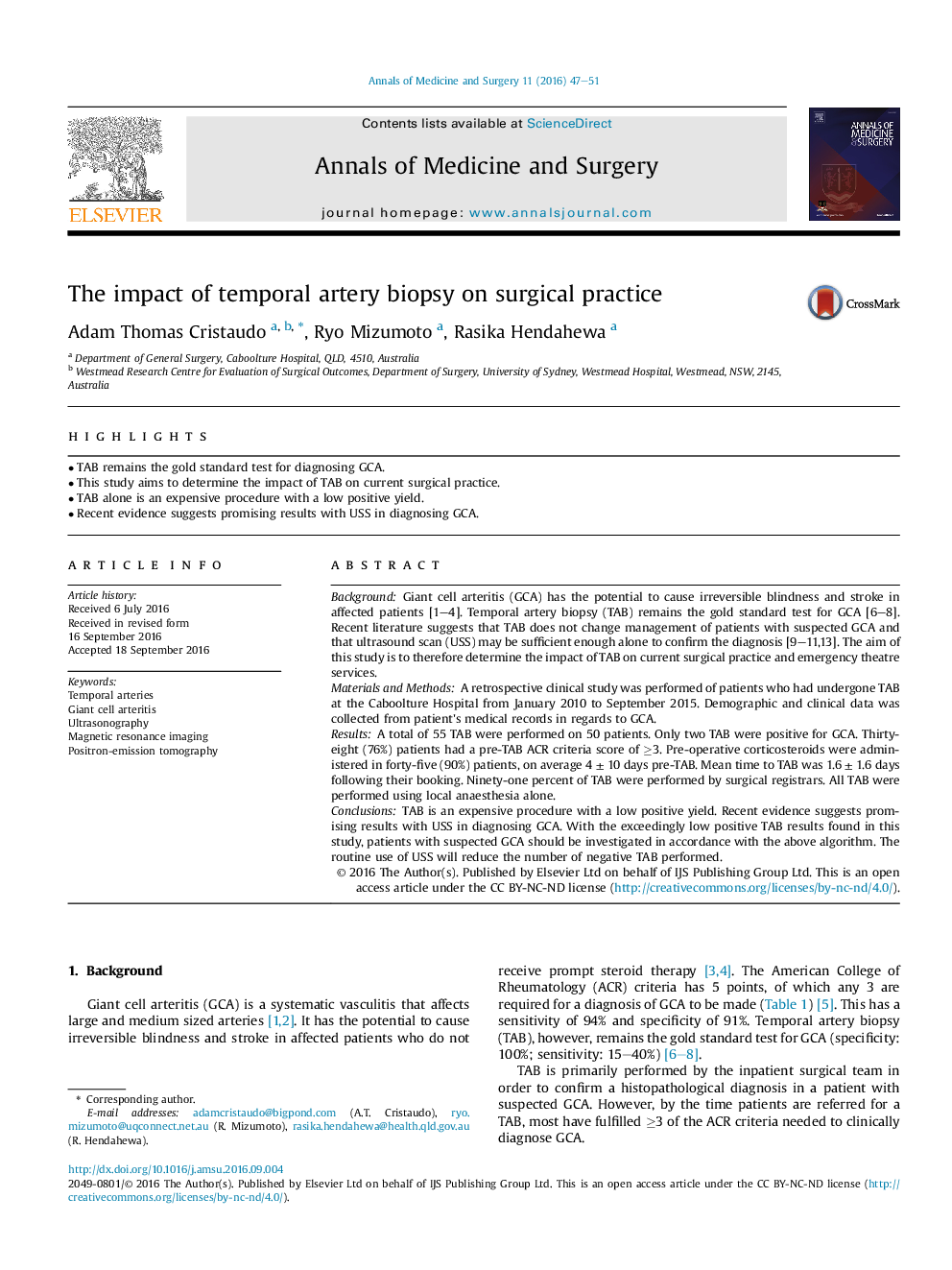| Article ID | Journal | Published Year | Pages | File Type |
|---|---|---|---|---|
| 4195106 | Annals of Medicine and Surgery | 2016 | 5 Pages |
•TAB remains the gold standard test for diagnosing GCA.•This study aims to determine the impact of TAB on current surgical practice.•TAB alone is an expensive procedure with a low positive yield.•Recent evidence suggests promising results with USS in diagnosing GCA.
BackgroundGiant cell arteritis (GCA) has the potential to cause irreversible blindness and stroke in affected patients [1–4]. Temporal artery biopsy (TAB) remains the gold standard test for GCA [6–8]. Recent literature suggests that TAB does not change management of patients with suspected GCA and that ultrasound scan (USS) may be sufficient enough alone to confirm the diagnosis [9–11,13]. The aim of this study is to therefore determine the impact of TAB on current surgical practice and emergency theatre services.Materials and MethodsA retrospective clinical study was performed of patients who had undergone TAB at the Caboolture Hospital from January 2010 to September 2015. Demographic and clinical data was collected from patient's medical records in regards to GCA.ResultsA total of 55 TAB were performed on 50 patients. Only two TAB were positive for GCA. Thirty-eight (76%) patients had a pre-TAB ACR criteria score of ≥3. Pre-operative corticosteroids were administered in forty-five (90%) patients, on average 4 ± 10 days pre-TAB. Mean time to TAB was 1.6 ± 1.6 days following their booking. Ninety-one percent of TAB were performed by surgical registrars. All TAB were performed using local anaesthesia alone.ConclusionsTAB is an expensive procedure with a low positive yield. Recent evidence suggests promising results with USS in diagnosing GCA. With the exceedingly low positive TAB results found in this study, patients with suspected GCA should be investigated in accordance with the above algorithm. The routine use of USS will reduce the number of negative TAB performed.
